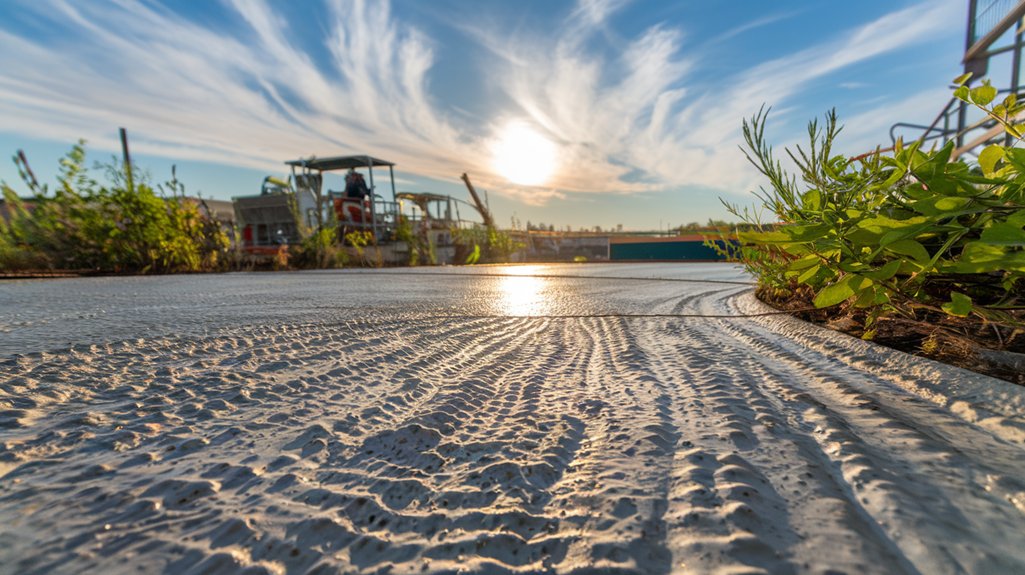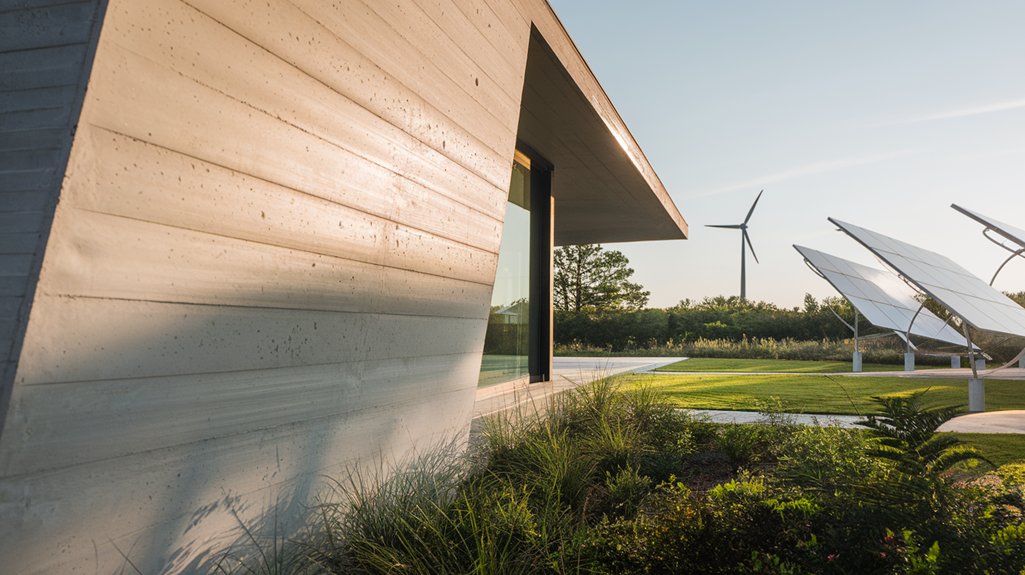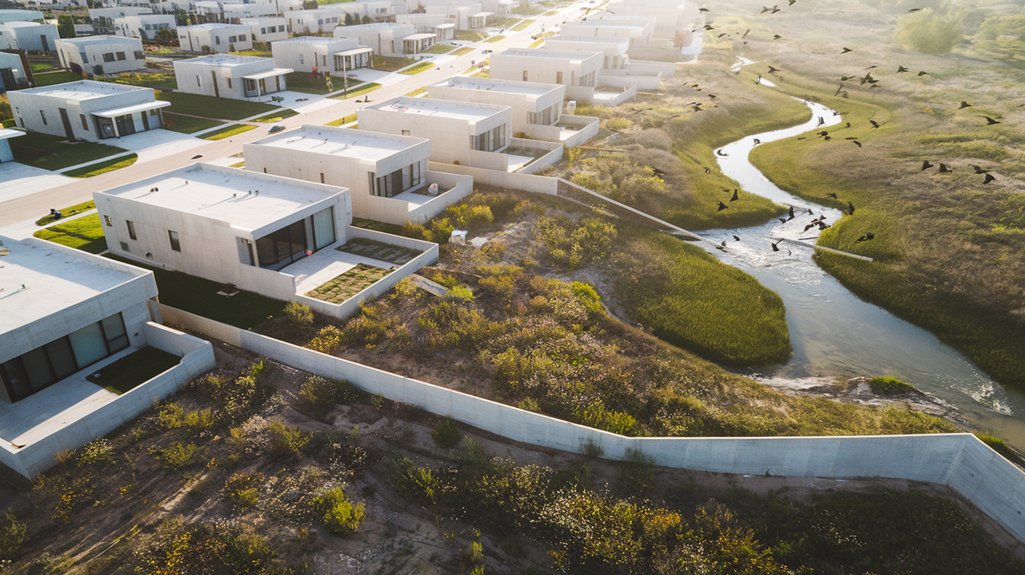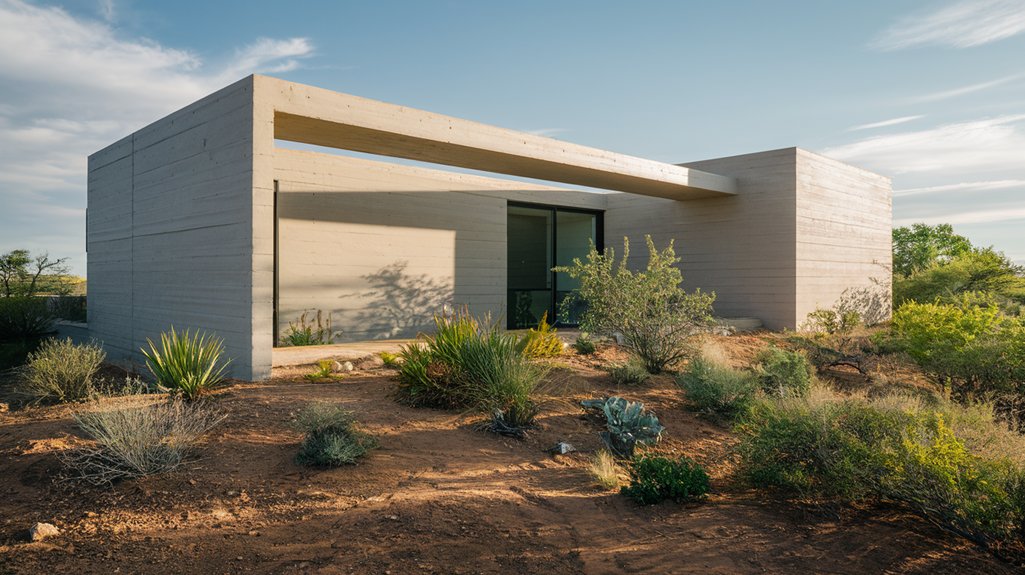Is Concrete a Sustainable Choice for Texas Homes?
When planning your home in San Antonio, Canyon Lake, or Austin, Texas, selecting the right building material is essential. Concrete has long been praised for its strength and durability, but is it truly a sustainable concrete for Texas homes? Let’s take a deeper look at how this versatile material fits into modern eco-conscious construction practices.
Key Takeaways
- Concrete’s durability minimizes repair needs, making it ideal for Texas weather.
- Using recycled content in concrete reduces its carbon footprint and environmental impact.
- Concrete production consumes energy but innovations like carbon capture are improving sustainability.
- Water runoff from impermeable surfaces can be mitigated through smart landscaping and design.
- Alternatives like hempcrete and rammed earth offer eco-conscious options for Texas homeowners.
The Lifecycle of Concrete Production

Understanding the entire lifecycle of concrete is key to evaluating its sustainability. From sourcing raw materials like limestone and clay to mixing and curing, every step has an impact. Integrating recycled aggregates reduces waste and strengthens sustainability. Reusing crushed concrete from demolition sites is an excellent way to conserve resources while building new structures.
Energy Consumption and Emissions

The energy-intensive process of producing traditional concrete raises concerns about emissions. However, using eco-friendly binders like fly ash or slag cement and exploring carbon capture technology can drastically reduce its carbon footprint. Builders in Texas can help promote sustainable concrete for Texas homes by sourcing materials responsibly and adopting lower-emission practices.
The Impact of Concrete on Local Ecosystems

Concrete’s impermeable surface can lead to excessive water runoff, carrying pollutants into local waterways and disrupting ecosystems. In areas like Canyon Lake and San Antonio, where natural beauty is a community priority, this can be a major concern. Mitigating these effects requires thoughtful landscape planning, rain gardens, and permeable paving systems.
Durability and Maintenance Considerations
One of the strongest arguments for sustainable concrete for Texas homes is its impressive durability. With proper installation and care, concrete can last several decades. Sealants, regular cleaning, and minor repairs like crack filling go a long way in reducing the need for replacement—making it both cost-effective and eco-friendly over time.
Sustainable Alternatives to Traditional Concrete
Texas homeowners now have access to a range of eco-conscious alternatives. Materials such as:
- Hempcrete: Lightweight and insulating, ideal for hot Texas climates.
- Rammed Earth: Uses natural materials and provides excellent thermal mass.
- Recycled Concrete: Made from crushed demolition waste, conserving natural resources.
Choosing the right material depends on your budget, climate, and environmental goals—but all contribute to greener construction.
The Future of Concrete in Sustainable Building Practices
- Recycled aggregates: Reduce raw material use and waste.
- Green certifications: LEED and other programs validate eco-conscious construction.
- Carbon capture innovation: Next-gen technologies are reshaping how concrete is produced.
- Longer lifespan with fewer repairs: Extending performance means fewer materials used over time.
Frequently Asked Questions
How Does Concrete Compare to Wood in Sustainability?
While wood may have a lower initial carbon footprint, concrete’s durability and lower maintenance make it more sustainable long-term in Texas environments.
Can Recycled Concrete Be Used in Home Construction?
Yes, recycled concrete is commonly used for foundations, driveways, and pathways, making it a practical and eco-friendly choice.
Are There Certifications for Sustainable Concrete?
Look for LEED certification or equivalent programs to ensure your materials meet sustainable standards.
How Does Climate in Texas Affect Concrete’s Sustainability?
Extreme temperatures and storms require durable materials. Concrete holds up well in Texas conditions with the right sealants and drainage planning.
Concrete can absolutely be a sustainable choice for Texas homes when used thoughtfully. From incorporating recycled materials to understanding local climate and ecology, every decision matters. At Valor Concrete, we help you build better—with smarter materials, responsible sourcing, and sustainable goals in mind.
Contact Valor Concrete today to discuss sustainable concrete options tailored to your location in San Antonio, Canyon Lake, or Austin, Texas.

